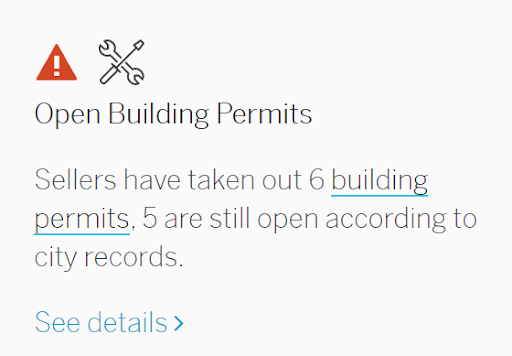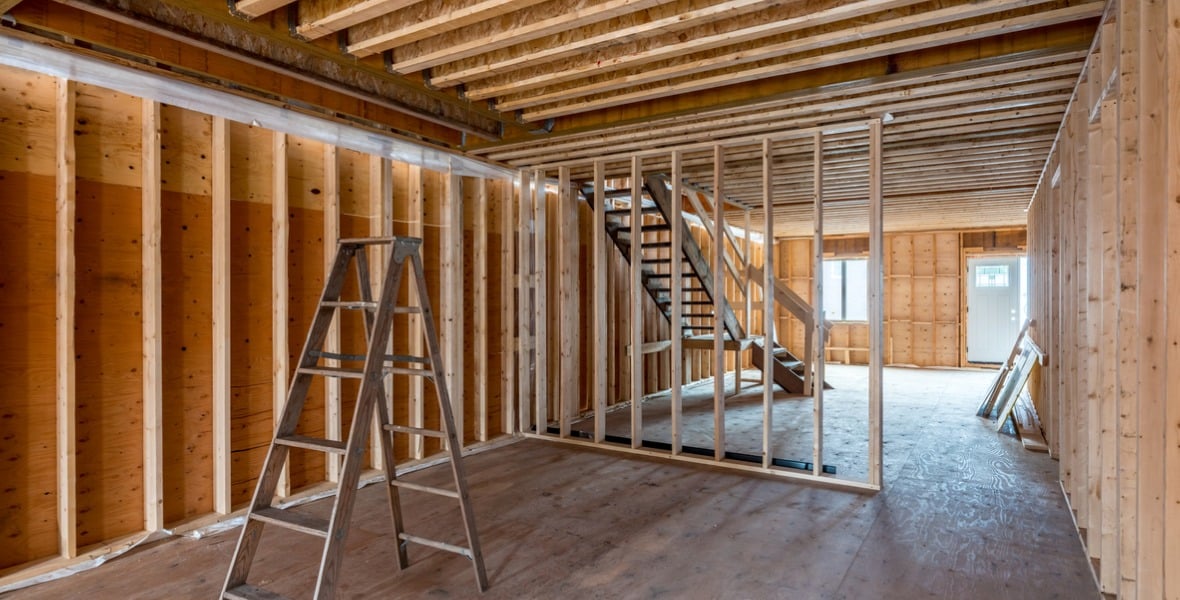What are building permits - and how can they help you avoid buying homes with major problems?
Editor’s Note: In this new weekly blog series, Move Smartly contributor John Pasalis, real estate data analyst, founder of TheMindfulBroker.com and President of Toronto-based Realosophy Realty, shows you how the data revolution can help you uncover Hidden House Problems (read intro to blog series here).
Want more tips now? Download this 'Hidden Home Problems' blog series as a free e-book
When you’re out looking to find a home you love (and can afford), you rarely give a thought to its building permit history.
So why do we display the entire building permit history available for every property for sale on Realosophy.com?

Source: Realosophy.com
After all, it’s information few buyers and agents looked into even manually, in pre-internet days.
But this information can bridge one of the knowledge gaps that is most familiar to home buyers. When you hire a home inspector to report on the physical health of a home you are looking to buy (or choose to rely on the inspection report provided by the sellers), the inspector will caution that they cannot report on things they cannot inspect, such as what lies behind drywall, where electrical, plumbing, structural issues and other common home problems often appear.
This is where building permit information can help.
Whenever a home owner embarks on substantial renovations, municipalities generally require them to obtain permits to ensure that construction, plumbing and electrical work is done in a safe way. To obtaining a permit, an owner must provide formal plans (normally drafted by professionals) for municipal approval and submit to municipal inspections of the renovation work being undertaken at various stages.
The information contained in building permits can tell you a lot about a property - as can the absence of permits, particularly when a home appears to have been substantially renovated without any.
While there are many ways looking at a building permit history has helped our clients over the years, I’ll touch on two simple ways that can help you make a more informed decision when buying a home.
Were renovations done right?
While the approvals and inspections required throughout the building permit process are no guarantee of the quality of the workmanship of the finished product - they ensure that plumbing, electrical and structural work is at least reviewed before drywall is put up.
This is particularly important when the repairs made to a property are recent.
For example, if a seller has lowered the foundation of a home to increase the ceiling height of the basement, a buyer should be aware that this is a major structural renovation, which must be done correctly to avoid problems with your home’s structure in the future. If the seller did not get building permits, a buyer can only hope that the work was done professionally and according to the building code. This is a significant concern given that some homes, particularly in older Toronto Area neighbourhoods, have actually experienced major structural damage and in some cases have completely collapsed during a lowering of their basement foundation.
The skeletons in the closet
Selling a home is a lot like posting on social media like Facebook or Instagram - everyone does their best to curate a great image while editing out less savoury details.
But buying a home is a big, long-term commitment so as a buyer, you can’t be satisfied with first impressions alone.
Looking at a home’s building permit history offers you one way of learning about a home’s previous problems that the seller often tries to keep a secret, which is why we display full permit information on Realosophy.com:

Source: Realosophy.com
Below are actual remarks from building permits for homes in Toronto:
“Proposal to demolish over 50% of existing two-storey single family detached dwelling due to termite damage.”
“Reconstruct 2nd floor due to fire damage.”
“Repairs to rear Foundation Brick wall and Deck due to car impact, adjacent to side Laneway.”
Most buyers would be very unhappy to learn these details about a house after they bought it. While some would choose to avoid a home altogether if they saw these types of past problems, other buyers may still choose to buy, provided that they are able to do further research to ensure any work undertaken was done properly (and that the original problem isn’t one that might reoccur in the future).
Want more tips now? Download this 'Hidden Home Problems' blog series as a free e-book
 John Pasalis is President of Realosophy Realty, a Toronto real estate brokerage which uses data analysis to advise residential real estate buyers, sellers and investors.
John Pasalis is President of Realosophy Realty, a Toronto real estate brokerage which uses data analysis to advise residential real estate buyers, sellers and investors.
A specialist in real estate data analysis, John’s research focuses on unlocking micro trends in the Greater Toronto Area real estate market. His research has been utilized by the Bank of Canada, the Canadian Mortgage and Housing Corporation (CMHC) and the International Monetary Fund (IMF).
Follow John on Twitter @johnpasalis




